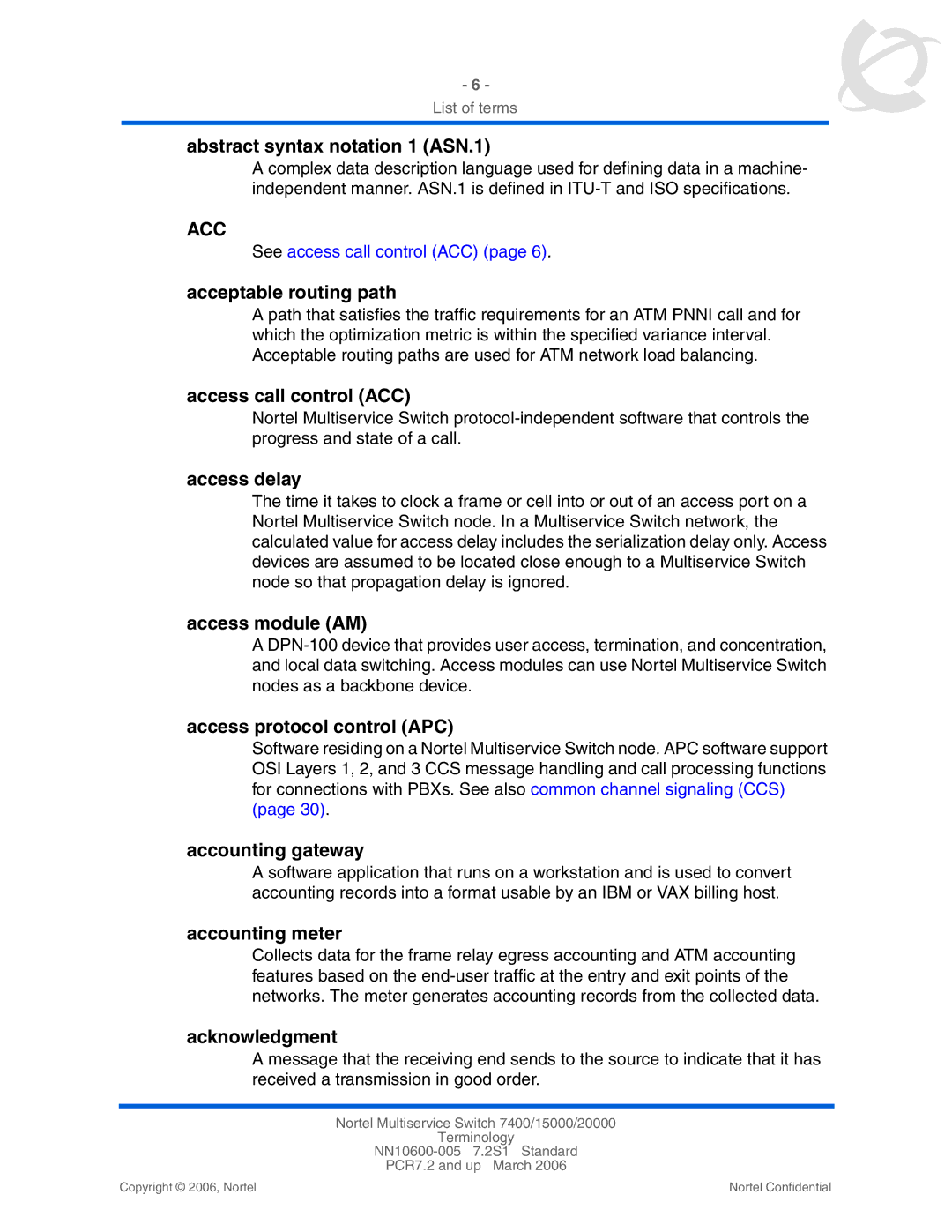
- 6 -
List of terms
abstract syntax notation 1 (ASN.1)
A complex data description language used for defining data in a machine- independent manner. ASN.1 is defined in
ACC
See access call control (ACC) (page 6).
acceptable routing path
A path that satisfies the traffic requirements for an ATM PNNI call and for which the optimization metric is within the specified variance interval. Acceptable routing paths are used for ATM network load balancing.
access call control (ACC)
Nortel Multiservice Switch
access delay
The time it takes to clock a frame or cell into or out of an access port on a Nortel Multiservice Switch node. In a Multiservice Switch network, the calculated value for access delay includes the serialization delay only. Access devices are assumed to be located close enough to a Multiservice Switch node so that propagation delay is ignored.
access module (AM)
A
access protocol control (APC)
Software residing on a Nortel Multiservice Switch node. APC software support OSI Layers 1, 2, and 3 CCS message handling and call processing functions for connections with PBXs. See also common channel signaling (CCS)
(page 30).
accounting gateway
A software application that runs on a workstation and is used to convert accounting records into a format usable by an IBM or VAX billing host.
accounting meter
Collects data for the frame relay egress accounting and ATM accounting features based on the
acknowledgment
A message that the receiving end sends to the source to indicate that it has received a transmission in good order.
Nortel Multiservice Switch 7400/15000/20000
Terminology
PCR7.2 and up March 2006
Copyright © 2006, Nortel | Nortel Confidential |
